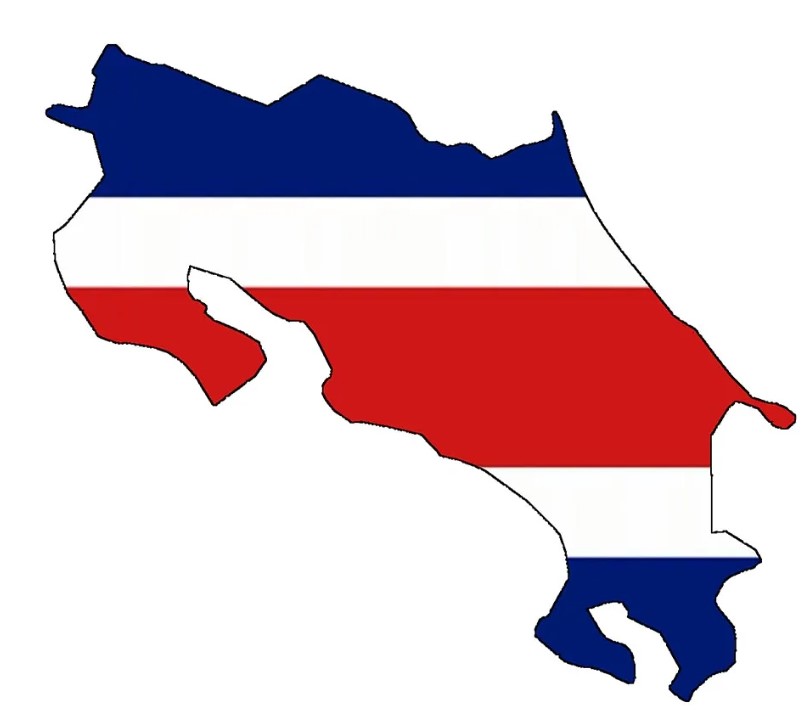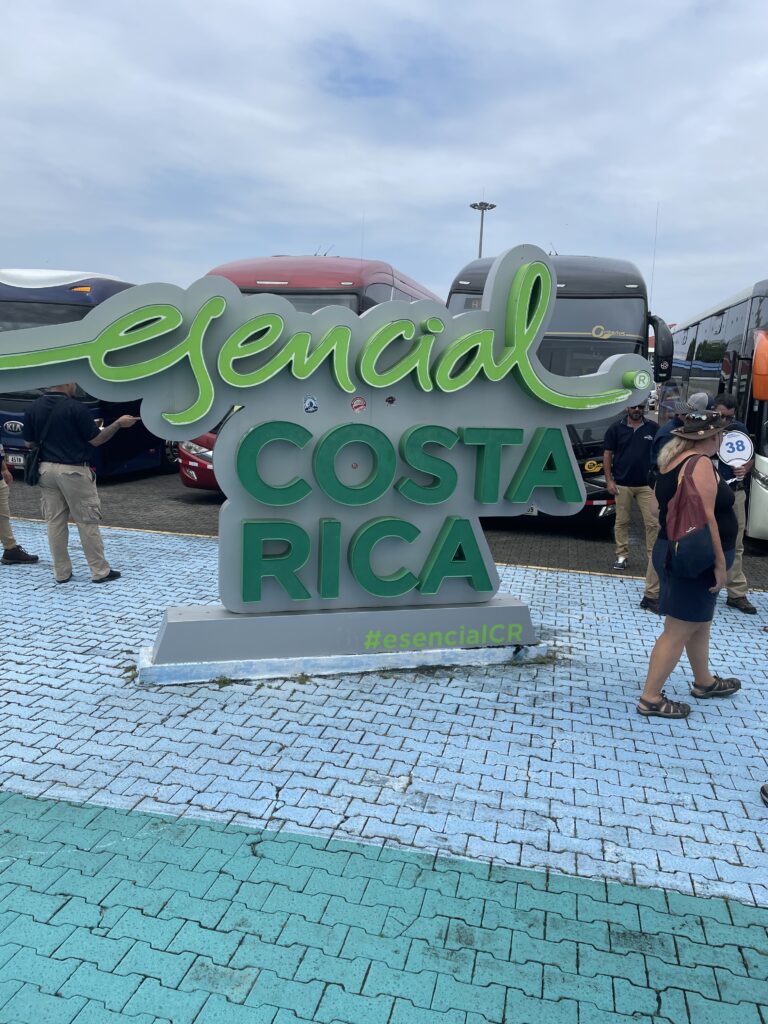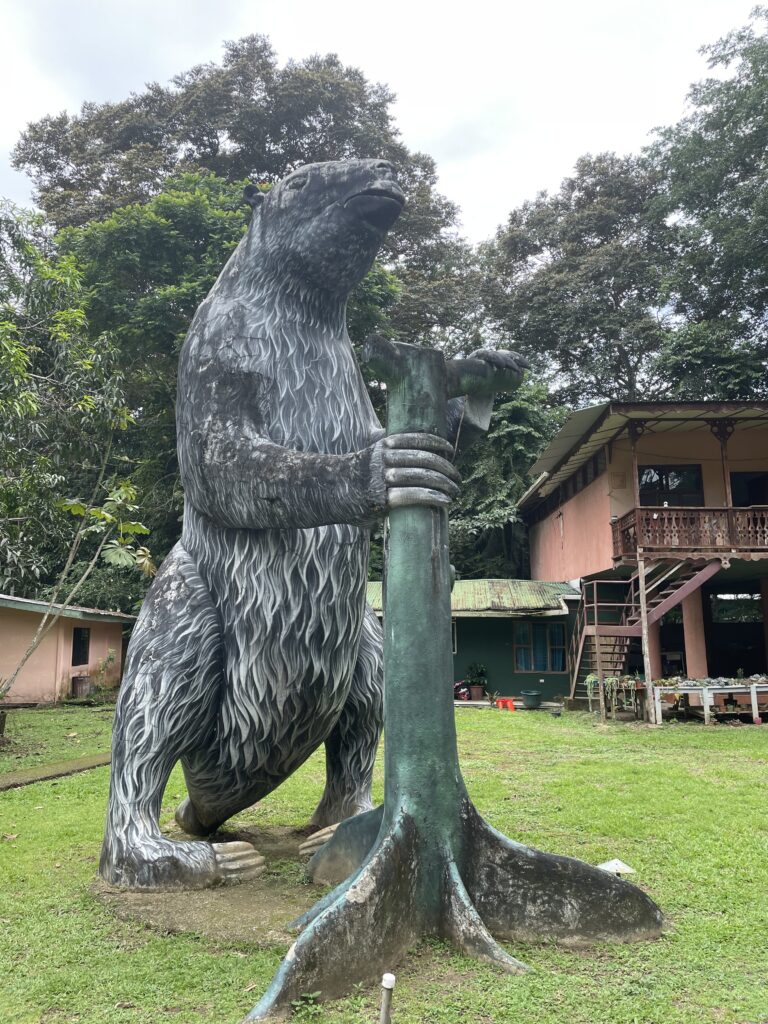
Costa Rica is a central American country of around five million people
It is bordered by Nicaragua to the north and Panama to the south. It shares a maritime border with Ecuador.
Costa Rica is a democratic and peaceful country that has not had an army since 1948. The government invests funds that it would have spent on an army into education, healthcare and pensions. Making it consistently one of the happiest places in the world. It also boasts an average life expectancy of 80 years.
Coffee was first planted in Costa Rica in 1808, and by the 1820s, it surpassed all else as the (tobacco, sugar, and cacao) as the primary export. Coffee remained the main export well into the 20th century, creating a wealthy class of growers, known as the Coffee Barons.

The Central Valley has the ideal conditions for producing coffee: altitude above 1,200 meters (4,000ft); temperatures averaging between 15°C and 28°C (59°F and 82°F); and the right soil conditions. By the mid-1800s an oligarchy of coffee barons had risen to positions of power and wealth, for the most part through processing and exporting the bean, rather than by actually growing it.
Education
Costa Rica has no military. In place of this, it has (until fairly recently) been investing all of the money it would have spent on education. Children spend 205 days in school every year and it is 100% free and mandated. For those of lesser means, lunches are provided by the government and corporate sponsorships cover backpacks, bags and equipment.
This spending resulted in Costa Rica having the highest literacy rates in most of the Americas, even surpassing the USA.
The previous government reduced this expenditure (from 8% to 3%) and the literacy rate visibly dropped.
So they were voted out at the first opportunity and the funding reinstated.

Green Credentials
Costa Rica’s real story is about how it managed to successfully grow its population and economy without destroying its natural resources. In the 1960s Costa Rica’s government realised that it their land use practices were not sustainable. In the late 1980s, they employed and implemented a National Conservation Strategy for Sustainable Development. This strategy made decisions based on input about the economy, demography, industrialisation, agriculture and energy. It had 5 main pillars:
- a system of national parks,
- debt reduction through land conservation,
- development of ecotourism,
- sustainable forestry practices, and
- collaborations between government and industry to develop valuable natural pharmaceutical products.
Biodiversity – Once upon a time up to 90% of the country was covered by forests. Today only about 28% of the forest remains, but this is now in protected areas. There are 12 ecological zones and over 100 national parks, reserves or refuges. Costa Rica is the most biodiverse country in the world, with a whopping 500,000 species of wildlife (900 of which are birds) many of which are classified as rare or endangered.
Volcanos – Costa Rica is part of the Pacific Ring Fire Circle and has over 200 volcanos tracing back over 65 million years. Around 100 show any signs of activity and only five are classified as active. the five active ones are Arenal, Poas, Rincón de la Vieja, Irazu and the Turrialba. The last one is currently active and should not be visited.





Interesting Eco Facts
- Costa Rica is 98% deforestation-free.
- They generate 99% of their electricity from renewable sources, such as hydro, wind, and solar power.
- 80% of their renewable energy generation comes from hydroelectricity.
- Costa Rica recycles 60% of its waste. T
- All students in Costa Rica take sustainability courses from elementary school through university.
Sloths
We saw virtually none of the town (to be fair there was not really that much to take in) as Jill had booked us on a tour. The tour was to take in the local sloth rescue facility, a banana plantation and a boat ride through the jungle canals.
To say that sloths are a long term favourite of mine is an understatement and the opportunity to see them up close was awesome and, as our day panned out, we even got to see some in the wild.
The sanctuary specialised in rescuing sick, orphaned, abandoned or injured sloths. Particularly like my 3 armed little buddy in this video.
The sloth sanctuary got us up close and personal with about a dozen sloths (both 2 and 3 toed) while giving us the threatened habitat speech.
The talk even took us into the evolution of the sloth-type spiel which linked them to 4-5 meter tall prehistoric ancestors.












After the sloths came a local banana plantation (the second biggest earner of Costa Rica). To say this was interesting would have been a stretch. It was a small plantation, with some leaf cutter ants, and some bananas and that was about it. Jill did get to see some hummingbirds, but those little suckers are quick and were long gone before cameras could come out. But it was an ok way to kill an hour while staring at overpriced tourist trinkets.





From the banana plantation, we were off to a jungle cruise through the canals that act as the main transportation system of the country. As the roads are so poor and the ground is pretty wet, the inland canals provide the main means of transportation of both people and goods.
Our first sight getting on the boat was a small (maybe a metre) Caiman that was right near the launching site. From here we putted slowly along the canals looking for wildlife, which we found. There was a nice array of birds and lizards about with the odd sloth or two and some shagging monkeys in the trees.



We topped off our boat trip with some fresh fruit (pineapples, banana and watermelon), there was a table with some unidentifiable local fruits, but they were not on offer and then off to the ship for a speedy departure.
Turtles
As you would have worked out by now, turtles have become one of my favourite animals, having had the opportunity to swim with them. Well Costa Rica is home to some of the most important turtle nesting beaches in the world. Both the Pacific and Atlantic coasts have nesting sites, representing five of the world´s seven species of turtles. These are the: olive ridley turtle, giant leatherback, green, hawksbill and loggerhead.






Costa Rica is incredibly progressive in many ways, but as a random visitor, it seems pretty primitive. The houses are mostly run-down huts, and the sheer volume of razor wire in place is always troubling (although Jill did raise the option that it may be keeping the monkeys out). It does however seem like there is a distinct difference (in this region at least) between the Pacific and Atlantic (or Caribbean) coasts. The Atlantic coast settlements around the Caribbean are pretty basic and infrastructure is sparse.